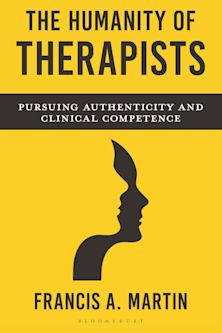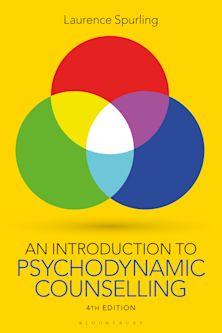- Home
- ACADEMIC
- Psychology
- Psychotherapy & Counselling
- Integrated Care for the Traumatized
Integrated Care for the Traumatized
A Whole-Person Approach
Integrated Care for the Traumatized
A Whole-Person Approach
You must sign in to add this item to your wishlist. Please sign in or create an account
Description
Integrated Care for the Traumatized puts forth a model for the future of behavioral health focused on health care integration and the importance of the Whole Person Approach (WPA) in guiding the integration. This book fills a void applying the WPA integration to the traumatized that enables the reader to learn from experienced trauma practitioners on how to assess and treat trauma as humanely and compassionately as possible. This approach of expanding the possibilities of behavioral health by centering upon the whole person is an old idea that is emerging as a modern solution to over specialized practices. Among other things this WPA approach, completed with spirituality, psychology, medicine, social work, and psychiatry, helps traumatized and their families function in the social environment.
The book has four sections: Foundations, Interventions for Individuals, Interventions for Communities, and Future of Integrative Care for the Traumatized. Each chapter discusses the importance of working within an integrative and WP approach, with descriptions of integrative models, research evidence and applications that are already working. These chapters can help students, families, and seasoned professionals to improve upon and expand their practice with the traumatized in both the individual and community contexts.
Table of Contents
I: Foundations
1 The Whole Person Approach to Integrated Health Care
Ilene Serlin, Stanley Krippner, and Kirwan Rockefeller
2 Methodological Diversity in the Study of Trauma Treatments
Batya Rotter and Frederick J. Wertz
II: Interventions for Individuals
3 The 7-Step Integrative Healing Model
Ani Kalayjian and Daria Diakonova-Curtis
4 ART for Helping Children Heal in Crisis and Disaster
Judy Kuriansky
5 Dance Movement Therapy for Social Change: Working with Syrian and Rohingya Asylum Seekers
Sevin Seda Güney and Danny S. Lundmark
6 Animal-Assisted Interventions with Those Who Are Traumatized
Suzanne R. Engelman
7 The Therapeutic Spiral Model: A Psychodramatic Whole-Person Approach for Working with Trauma
Sylvia Israel
8 Time-Focused Psychotherapy: time Perspective Therapy
Rosemary Sword
III: Interventions for Communities
9 Israel Trauma and Resiliency Center—NATAL: Twenty Years of Coping with Invisible Wounds
Judith Yovel Recanati and the NATAL Professional Team
10 Indigenous Healing Psychotherapy and Restorative Circles
Myron Eshowsky
11Whole-Person Approaches in Individual and Communal Healing of Trauma
Steve S. Olweean
IV:Future of Integrative Care for the Traumatized
13 Promoting Caregiver Satisfaction and Regeneration
Eleanor Pardess
14 Integrative Care of the Whole Person: Conclusion and Recommendations
Ilene Serlin, Stanley Krippner, and Kirwan Rockefeller
Index
About the Authors
Product details
| Published | 12 Jul 2019 |
|---|---|
| Format | Ebook (PDF) |
| Edition | 1st |
| Extent | 232 |
| ISBN | 9798765172643 |
| Imprint | Rowman & Littlefield Publishers |
| Illustrations | 12 b/w photos; 4 tables |
| Publisher | Bloomsbury Publishing |
About the contributors
Reviews
-
Editors Serlin, Krippner, and Rockefeller, all practicing psychologists, here explain how a whole-person approach (WPA) can be used to guide the care of traumatized people, providing an important and excellent resource for all health care professionals--indeed, for anyone interested in communicating more effectively with others. Part 1 includes two foundational chapters explaining the WPA and making the case for methodological diversity in the study of trauma. Parts 2 and 3 are devoted to group therapy models and community-based applications, respectively. Each chapter describes suggested tools and successful interventions, adding supportive theoretical rationales, and individual chapters are devoted to reporting specific applications in a diverse range of cultural settings and situational environments. All contributions are written by experts in behavioral health with specialization in stress and trauma. Part 4 provides suggestions for extending the whole-person approach to address the needs of caregivers and recommendations for the future. Overall, this book describes the paradigm shift from illness and symptom management to an integrative model of practice that is growth-oriented and focused on enhancement of meaning for the traumatized individual or community, offering a fascinating blueprint for how best to assess and treat trauma today.
Summing Up: Recommended. Upper-division undergraduates through faculty; professionals.Choice Reviews
-
Integrated Care for the Traumatized is a must-have for clinicians and researchers involved in trauma, PTSD, resilience, and PTG. The book is a who’s who of those involved in innovative, contemporary evidence based practices, and in addition, is well-written in academic, but free of psychobabble or unnecessary jargon.
APA Division 32 Journal
-
In a world rife with conflicts and wars, suffering from trauma has become a common occurrence. . . In view of this, this edited book on trauma treatment approaches is welcome, especially because the approaches discussed differ from the traditional single-theory-based approaches inasmuch as they focus on integrated growth-promoting approaches to treat the whole person. . . . What this book can do is inform psychologists that alternative approaches to diagnosis and treatment are currently being used to treat trauma around the world with some success. Without their availability, traumatized people would receive no help at all. The book serves an important purpose—it brings to people in the field a variety of person-centered psychotherapeutic modalities that people will not ordinarily know about or have heard of in treating trauma arising from wars and natural catastrophes. More importantly, the authors talk from the authority of experience gained from working in many parts of the world where they have ventured to implement their programs.
The Amplifier Magazine
-
This book makes a dynamic contribution to the field of trauma in relationship to whole-person treatment.
Body, Movement and Dance In Psychotherapy
-
Trauma is both universal and deeply personal. Traumatic experiences shatter safety and threaten the body, the mind, and the soul. The outward signs may be similar, but each person and each community responds in profoundly particular ways. This invaluable book transcends conventional thinking and engages traumatized individuals and communities in the creation of sustaining new meanings that help them heal and grow. It is an essential resource.
Alicia Lieberman, director, UCSF Child Trauma Research Program, Zuckerberg San Francisco General Hospital
-
Integrated Care for the Traumatized addresses important current issues related to trauma in various populations, including the impact of war on refugees, soldiers, and children. This book is a significant contribution to the field of trauma and healing, and is important to our understanding of how populations are impacted by trauma and which modalities are most effective for treatment. A very moving and meaningful work.
Carolyn Shoshana, Sonoma State University



































